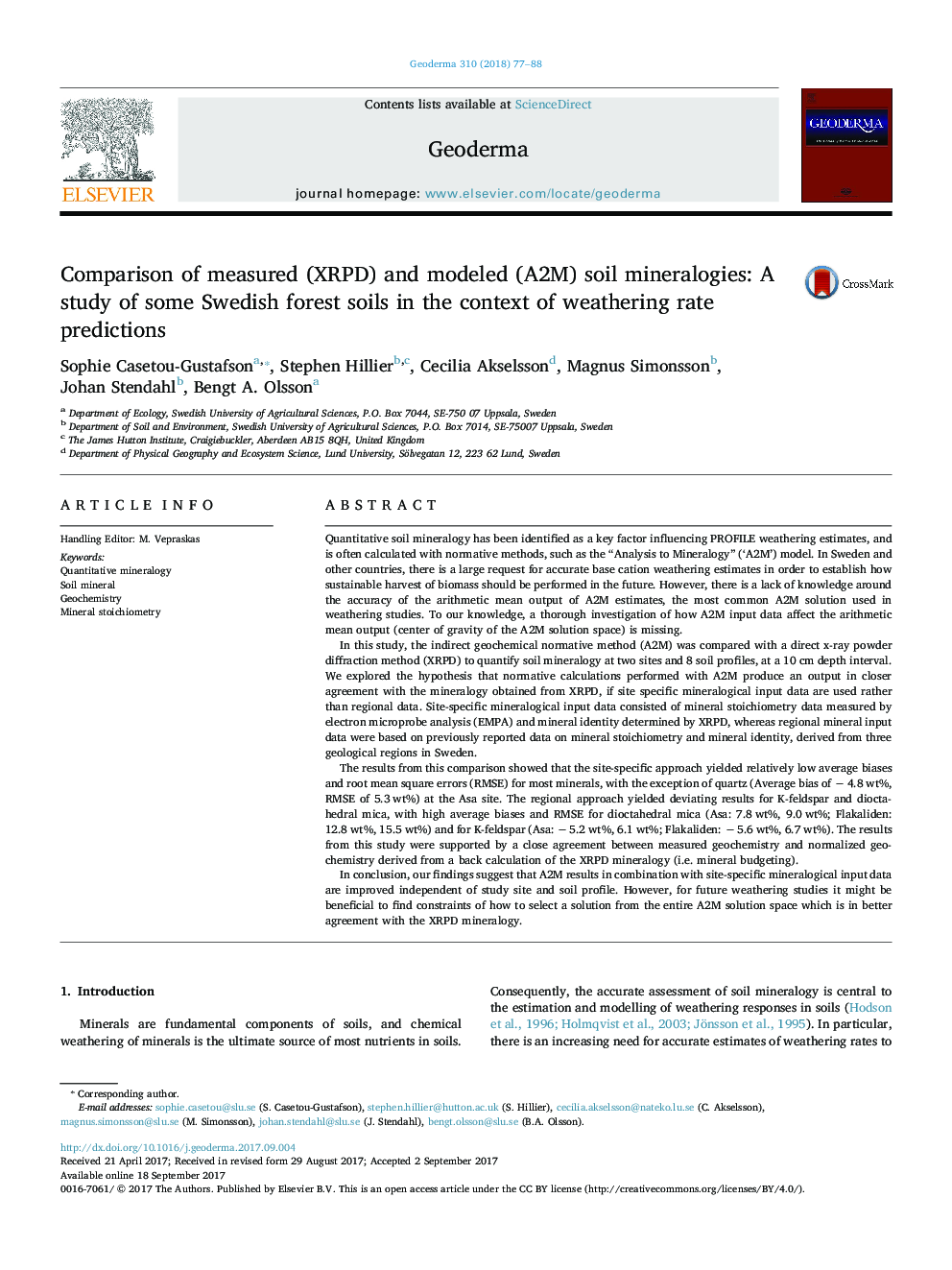| کد مقاله | کد نشریه | سال انتشار | مقاله انگلیسی | نسخه تمام متن |
|---|---|---|---|---|
| 5770361 | 1629407 | 2018 | 12 صفحه PDF | دانلود رایگان |

- Mineralogy of some Swedish forest soils was quantified with two methods.
- The indirect geochemical model A2M was compared with XRPD measurements.
- Effect of regional versus site-specific mineralogy input to A2M output was analysed.
- A2M reproduced main pattern of XRPD results except for K-feldspar and micas.
- Using site-specific mineralogy input improved A2M accuracy.
Quantitative soil mineralogy has been identified as a key factor influencing PROFILE weathering estimates, and is often calculated with normative methods, such as the “Analysis to Mineralogy” ('A2M') model. In Sweden and other countries, there is a large request for accurate base cation weathering estimates in order to establish how sustainable harvest of biomass should be performed in the future. However, there is a lack of knowledge around the accuracy of the arithmetic mean output of A2M estimates, the most common A2M solution used in weathering studies. To our knowledge, a thorough investigation of how A2M input data affect the arithmetic mean output (center of gravity of the A2M solution space) is missing.In this study, the indirect geochemical normative method (A2M) was compared with a direct x-ray powder diffraction method (XRPD) to quantify soil mineralogy at two sites and 8 soil profiles, at a 10 cm depth interval. We explored the hypothesis that normative calculations performed with A2M produce an output in closer agreement with the mineralogy obtained from XRPD, if site specific mineralogical input data are used rather than regional data. Site-specific mineralogical input data consisted of mineral stoichiometry data measured by electron microprobe analysis (EMPA) and mineral identity determined by XRPD, whereas regional mineral input data were based on previously reported data on mineral stoichiometry and mineral identity, derived from three geological regions in Sweden.The results from this comparison showed that the site-specific approach yielded relatively low average biases and root mean square errors (RMSE) for most minerals, with the exception of quartz (Average bias of â 4.8 wt%, RMSE of 5.3 wt%) at the Asa site. The regional approach yielded deviating results for K-feldspar and dioctahedral mica, with high average biases and RMSE for dioctahedral mica (Asa: 7.8 wt%, 9.0 wt%; Flakaliden: 12.8 wt%, 15.5 wt%) and for K-feldspar (Asa: â 5.2 wt%, 6.1 wt%; Flakaliden: â 5.6 wt%, 6.7 wt%). The results from this study were supported by a close agreement between measured geochemistry and normalized geochemistry derived from a back calculation of the XRPD mineralogy (i.e. mineral budgeting).In conclusion, our findings suggest that A2M results in combination with site-specific mineralogical input data are improved independent of study site and soil profile. However, for future weathering studies it might be beneficial to find constraints of how to select a solution from the entire A2M solution space which is in better agreement with the XRPD mineralogy.
Journal: Geoderma - Volume 310, 15 January 2018, Pages 77-88